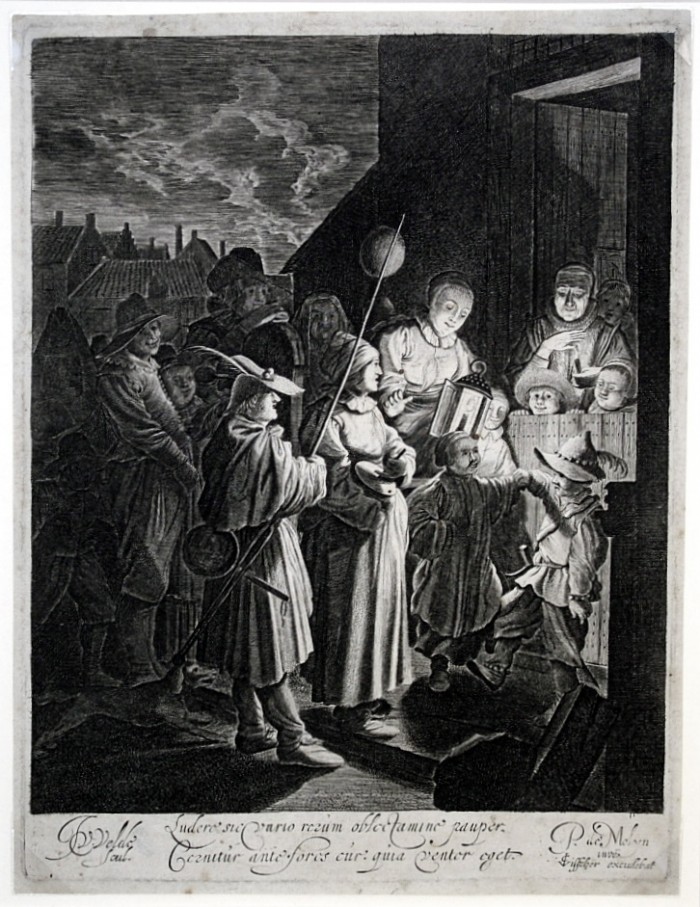Shrove Tuesday (also, Carnival)
Jan van de Velde (1593-1641), Shrove Tuesday (also, Carnival), engraving, c. 1630, after Pieter Molyn (1595-1661). References: Hollstein 150, Francken and Van der Kellen 67, third state (of 3). In generally good condition but pricked as if for transfer (visible verso), slight staining generall not affecting image, with small margins, trimmed outside of the plate mark. 9 x 6 3/4 inches.
Inscription Content: Lettered in lower margin, with production details and two lines of Latin: “Ludere sic … / … venter eget.” and “J. V. Velde scul. / P. de Molyn inve.”.
A fine impression.
After about 1622 Jan van de Velde began to make dark evening or night scenes in engraving, using a tonal system adapted from that of Henrik Goudt. These prints, a few of which were based on works of the painter (and sometime etcher) Pieter Molyn (or Molijn), were forerunners of Rembrandt’s night scenes such as St. Jerome in a Dark Chamber.
Pieter Molyn was a Haarlem painter of landscapes and genre scenes. Born in London of Flemish parents, he joined the Haarlem chapter of the Guild of St. Lukes in 1616, and was a member of the guild and active in Haarlem until his death in 1661. Although others made etchings and engravings based upon his drawings and paintings, he is known to have made only four etchings personally.
Shrove Tuesday was the last day before the beginning of Lent on Ash Wednesday. The celebratory nature of the day is a counterpoint to the somber nature of the season of Lent, and is associated with a continuing carnival tradition (celebrated as Mardi Gras in various traditions). This scene is lit by a lantern held by a female figure standing outside the house at right, two children are dancing in front of the doorway from behind which another two children and their mother are looking on, and further revellers can be seen in the street at left.

